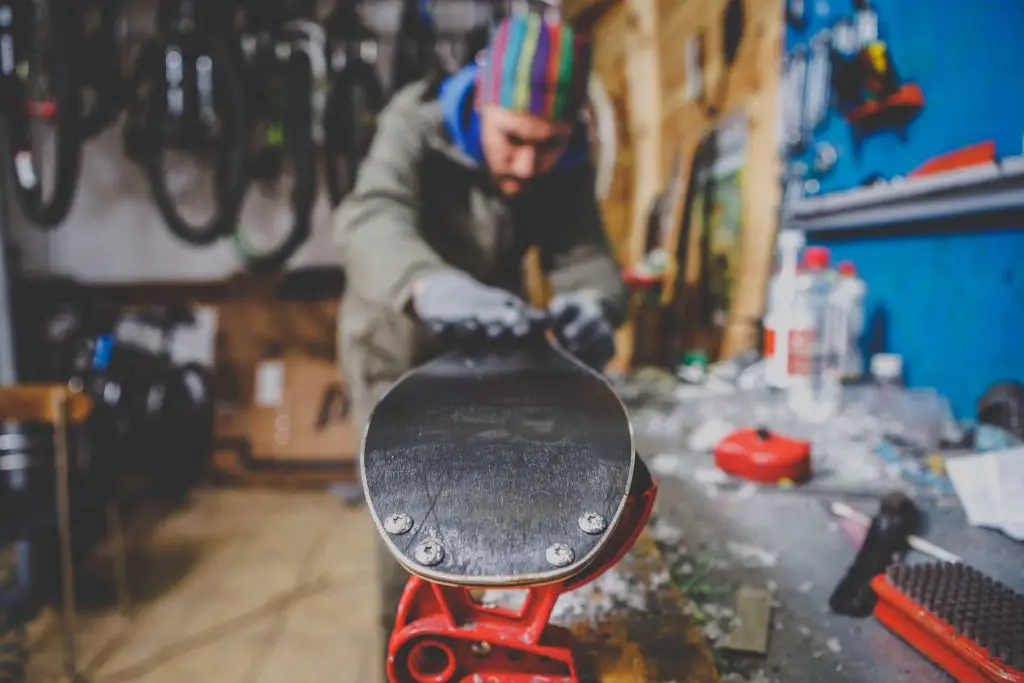How to Care For Downhill Skis


Well-cared-for skis are essential for boosting performance levels on the slopes and minimizing risk of injury. Razor-sharp edges give skiers an advantage in navigating challenging terrain, but are easily dulled by improper care.
Practice these tips for keeping your skis in top shape for increased ski longevity and peak performance levels on the trails season after season.
Dry off skis at the end of the day
No matter how fatigued you may be at the day’s end, don’t make the mistake of leaving wet skis to dry on their own. Take a minute to wipe down your skis with a soft dry cloth before stowing them away. The metal edges and bindings are prone to rust if snow or water is left to sit too long. This quick and easy investment in the maintenance of your skis will go a long way in safeguarding equipment.
Regularly wax and sharpen your skis
Jane Watson, creative team manager at REI, emphasizes the importance of proper maintenance: “It’s important to keep your skis properly tuned and waxed so they’ll continue to perform as you want them to.” Getting up on edges and turning on the slopes becomes a much more challenging task when skis aren’t adequately waxed. Plus, since ski wax is water repellent, it works to protect the base of the ski from moisture.
Many skiers prefer to wax skis themselves. For those new to the sport, there’s a host of waxing tips and techniques available online to the novice waxer. Those not interested in learning the waxing process can drop off skis at a local ski shop to have them professionally done.
Ideally, waxing should be done at the end of each ski day, but that’s not always realistic. Waxing after every three to four days on the slopes is sufficient.
Keeping metal edges sharp helps to improve a skier’s turning ability and overall ski performance. Sharpening skies is a bit more complicated process than waxing, and therefore we don’t recommend you try to do it yourself. It’s best to have skis sharpened by a professional once a year.

Smooth out burrs
A day spent hitting the mountain can take its toll on your skis. Minor nicks or scrapes from rocks can impair your skiing ability if not addressed. Run your thumb down each edge to identify any damage, then use a pocket stone – available at any ski shop – to easily smooth out those rough edges.
Be sure to examine for any extensive damage made to the skis. Repairs for core shots and larger blemishes requiring more than a pocket stone can be done at home. DIY repair options range from simple solutions like the P-Tex Candle Method and Toko P-Tex Powder, to more complex repairs like Base Welds. For severe core shots, we recommend having skis repaired by a professional at your local ski shop.
Safely store skis in the off-season
Every memorable ski season inevitably comes to an end. When it does, ensure edges have been properly waxed and stowed away. Take storage conditions into account when choosing a location for the off-season. Choose a cool, dry location clear of any clutter that could put unnecessary pressure on the skis.
“Never store skis in a ski bag and avoid storing them in the basement if at all possible,” advised Jose Batista, ski buyer and sales manager for Pelican Shops, a group of year-round outdoor recreation stores in New Jersey and Pennsylvania. “The best location for summer storage is the garage – preferably with the skis hung on the wall.”
Make these maintenance tips part of your ski season routine, and every year your equipment will be as ready as you are to hit the trails.




